‘What would you do if peace broke out today?’ I ask Slavik, 21, in the sunlit courtyard of a refugee shelter in Perechyn in western Ukraine. Even the birds cease their chatter, and the trees in their spring finery stoop lower, to listen to his response. Upstairs on the third floor of the shelter, a converted Soviet-era school, a line of new washing machines pause in mid-spin.
‘I would weep and weep….’ he says, his hands shaking, the tears streaming down his face. In faraway Rome at the same moment Francis, the Pope of refugees, is being laid to rest in the church of Santa Maria Maggiore.
‘Only then could I start to plan how to give my mother a decent burial.’
More than three years into this war, the refugees from eastern Ukraine who have found a safe haven in western Ukraine, are very tired. They’re grateful for the support they still get, distraught because of everyone and everything they’ve lost, and baffled by the decisions they will have to make, if and when the guns fall silent.
Marina, 37, died in her son Slavik’s arms, hit by shrapnel from a Russian shell in front of their home in Verkhnotoretske, north of Donetsk, on 15 March 2022, as they got back from shopping together. Then aged 18, Slavik buried her as best he could, in a bomb crater, and fled with his 4 younger brothers and sisters, whom he then adopted. His village is still under Russian occupation. His story made national, and international headlines at the time, due to the sheer horror of what happened, and to Slavik’s (Vyacheslav’s) eloquence - his willingness to talk about it all, despite the pain.
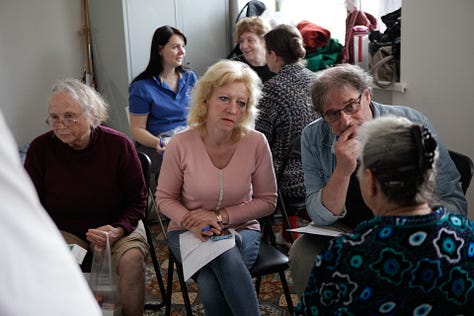
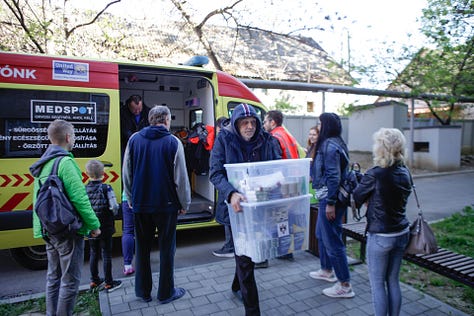
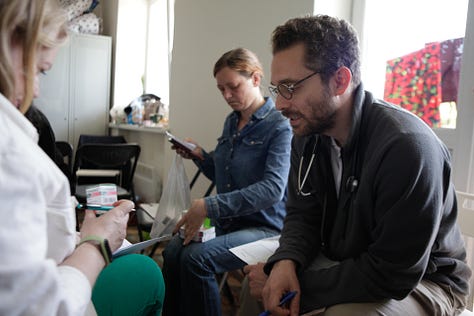
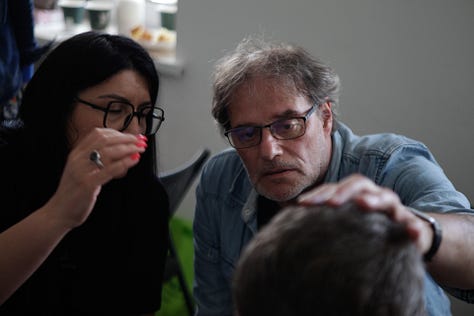
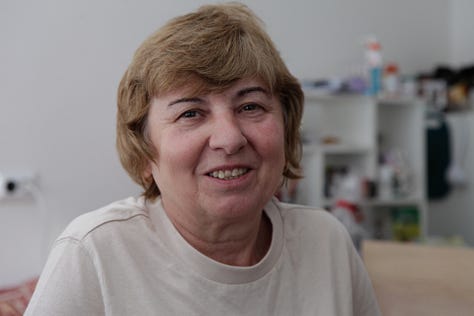
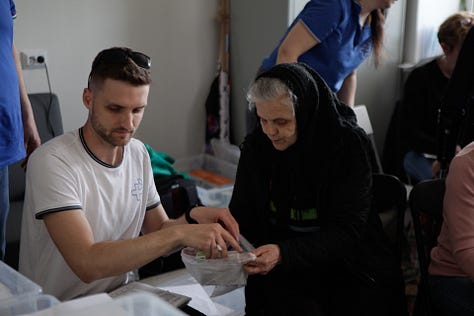
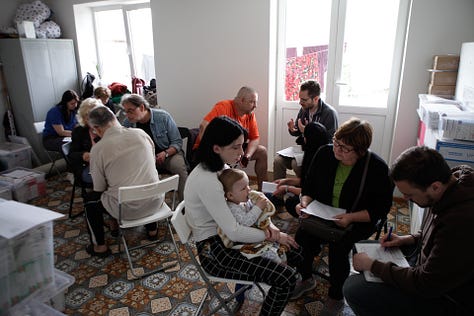
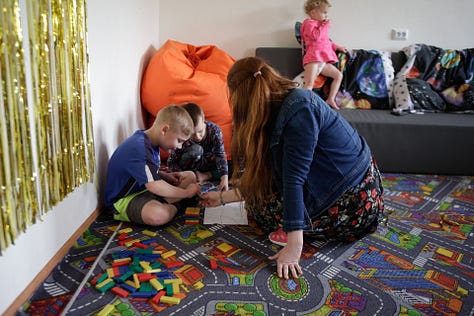
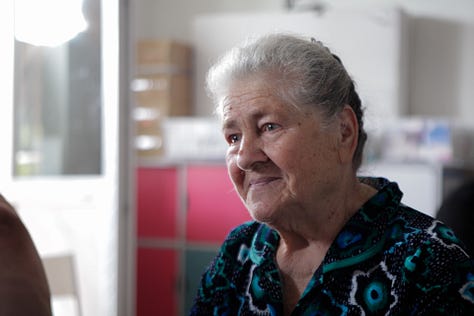
This gallery by Gergö Somogyvári
Upstairs on the third floor of the shelter, a team of doctors and psychologists from MedSpot, a Hungarian medical charity, have just arrived in two ambulances and a minibus. They set up four workstations, and at least half the 100 or so displaced people who live here gather for medical consultations. There are elderly women in dressing gowns and slippers, a few small children, one young mother, some men above military age.
MedSpot was established in 2015, to help the refugees pouring into Hungary from the Middle East, Afghanistan, and sub-Saharan Africa. When the full-scale invasion of Ukraine began in February 2022, they continued their work. First on the Hungarian side of the border, then here inside Ukraine. They’ve been coming almost every month since then, bringing medicines the refugees cannot afford to buy, and offering advice, kindness and medical support to people close to despair. While the Hungarian government in Budapest opposes Ukraine’s membership in the EU and NATO, and misses no opportunity to criticise Ukrainian president Volodymyr Zelensky, these doctors offer a very different, compassionate face of Hungary.
‘The Hungarians have kept coming to help us,’ says Lila, 59, from the Zaporizhia region, ‘long after the other foreign charities gave up. We are very grateful.’ Then she leads me by the elbow, out into the corridor, where the acoustics are better, to sing.
Where did you learn to sing like that? I asked. ‘It’s a gift from God.’ she replied.
Each refugee here finds a different way of coping with the stress. For Lila, it is her singing. For Olha, in another refugee shelter served by the Hungarians, in the city of Uzhhorod, it is her knitting.
Olha is from Kreminna, in the Luhansk region. Her daughter Katja and two grandchildren are in Dnipro. Her other daughter Julia and two more grandchildren are behind Russian lines. Her granddaughter Anastasia is in Kherson, waiting desperately for news of her husband Ivan, in Russian captivity. ‘Every time there is a prisoner exchange, we hope he will be among them,’ she says, between sobs. She knits elves at Christmas, socks for other women to send to their sons on the front lines, and three ‘goodnight rabbits’ so far - one for a daughter, one for a granddaughter, and one, she insists, for me. The legs are made of strong aluminium. The mouth perplexed. In a country at peace, this would be a toy. Here, it’s a symbol of survival.
Olha donated blood 159 times before she was diagnosed with cancer last year - ‘caused by all this stress we live under.’. Now she is convalescing after a major operation, and back to her knitting.
What should Ukraine, and above all, its president, on whose shoulders the decision rests, do now? I ask each of the refugees. Some dare to contemplate a trade of land for peace. Others rule that out. We study pictures on my phone of Zelensky meeting Trump on the marble, chess-board floor of St Peter’s Basilica as we speak. The faces of the leaders are as grim as those of the women I meet here in Ukraine. It is their land, their villages and towns, their men, if they are still alive, and their graves which their president is being pressurised to surrender.
Back at the shelter in Perechyn, Vika is preparing to celebrate her 20th birthday. She hands Artem, her ten month old baby, to her mum, puts on some make-up, and heads into Uzhhorod, to the movies with her mates. She doesn’t follow the news any more. Why not? She gives me a blank look. ‘The war will go on, anyway….’ she says. ‘If they had wanted to stop it, they had plenty of opportunities already…’ She’s from Pokrovsk, right on the current frontline, the target of 30 Russian offensives a day, and fierce Ukrainian resistance.
Vika is 20, from Pokrovsk
The next day in Uzhhorod, I watch star-struck couples strolling along the river shore, soldiers back from the front, and children enjoying ice cream, despite everything.
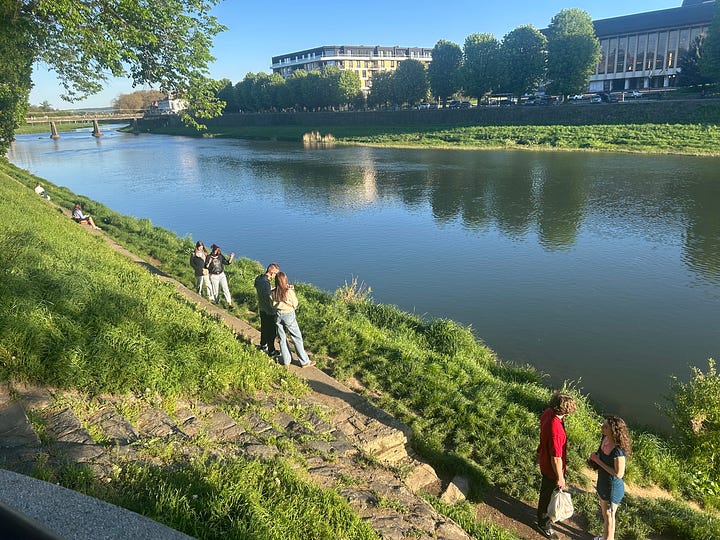
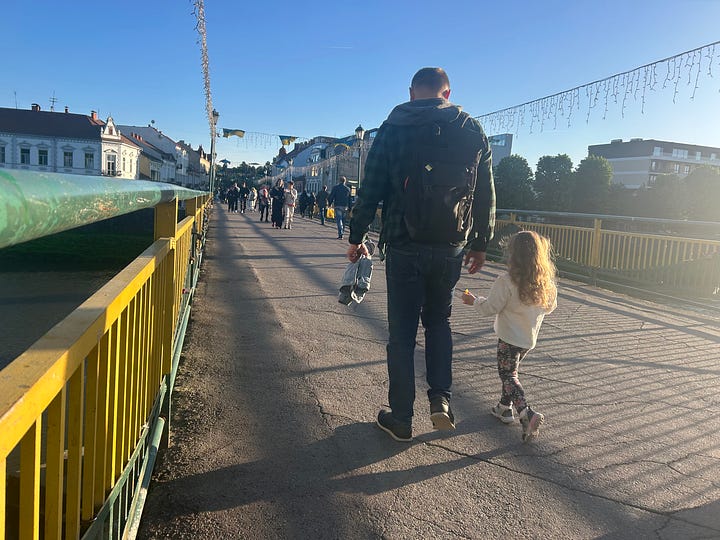
There’s even a miniature statue of the RMS Carpathia, the only ship to go to the rescue of the Titanic, as she slid into the icy waters of the North Atlantic in April 1912. The Carpathia, an Austro-Hungarian ship bound from New York to Fiume (Rijeka), saved 705 people that morning, from the lifeboats. 1503 perished in the disaster. All food for thought, as Ukraine gasps for air, between the icebergs of Russia and America.
My own book on refugees from previous conflicts can be found here.
My recent book on the Carpathians, including several chapters on Ukraine, is here.









